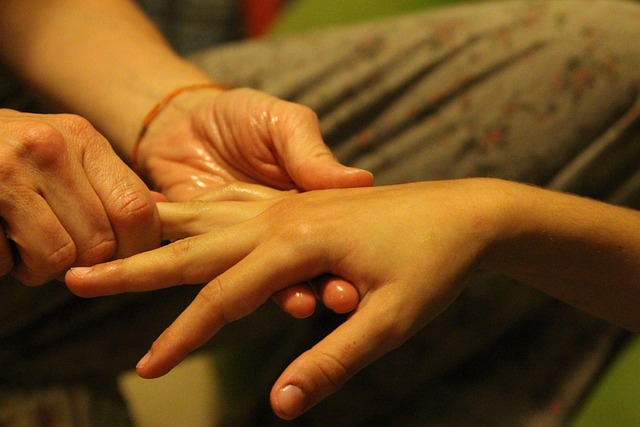Oregon's child welfare system benefits from dedicated advocacy efforts, with organizations and community members collaborating to protect at-risk youth. Their focus on areas like funding, foster care stability, education, and healthcare has improved responses to abuse and neglect. Through awareness raising, policy changes, and grassroots initiatives, these groups aim to break cycles of abuse while fostering a supportive environment for Oregon's children, despite ongoing challenges like high foster care rates and limited services.
Oregon’s child welfare system faces complex challenges, yet dedicated advocacy groups play a vital role in supporting vulnerable youth. This overview explores the key players and strategies in Oregon’s child welfare advocacy landscape. From understanding the current system to highlighting the impact of advocacy groups, this article delves into the protective measures, laws, and community engagement driving positive change for children in need. Discover how these efforts shape Oregon’s approach to ensuring a brighter future for its youngest residents.
- Oregon's Child Welfare System: An Overview
- Advocacy Groups and Their Roles
- Protecting Children: Laws and Policies
- Community Engagement in Advocacy
- Challenges and Future Directions
Oregon's Child Welfare System: An Overview

Oregon’s child welfare system is a complex network designed to protect and nurture at-risk youth. Advocacy efforts in this realm play a pivotal role in shaping policies and practices that impact young lives. The state has made significant strides in improving its response to child abuse and neglect, with various organizations and community members joining forces to advocate for better services and outcomes.
These advocacy efforts focus on numerous aspects, including increasing funding for at-risk youth programs, promoting foster care stability, and ensuring access to quality education and healthcare. By raising awareness and pushing for systemic change, Oregon’s child welfare advocates strive to create a safer, more supportive environment for all children within the state.
Advocacy Groups and Their Roles

Oregon boasts a vibrant landscape of child welfare advocacy groups, each dedicated to driving positive change for the state’s youth. These organizations play a pivotal role in shaping policies and raising awareness about critical issues affecting children and families. Through robust advocacy efforts Oregon, they ensure that the needs of vulnerable populations are not only heard but also addressed effectively.
From non-profit agencies to community-based initiatives, these groups focus on various aspects, including child protection, mental health support, educational opportunities, and family stabilization. Their collaborative approach, often involving partnerships with local governments and national networks, creates a supportive network for children and their families across the state.
Protecting Children: Laws and Policies

In Oregon, child welfare advocacy efforts are instrumental in protecting children and ensuring their well-being. The state has robust laws and policies in place to safeguard minors, with a strong focus on prevention and early intervention. Key legislation, such as the Child Abuse Prevention and Treatment Act (CAPTA), outlines clear guidelines for identifying, reporting, and responding to child abuse and neglect. These laws empower professionals, including social workers and healthcare providers, to take prompt action when suspecting any form of mistreatment.
Advocacy groups in Oregon play a pivotal role by raising awareness, educating communities, and lobbying for policy changes. Their efforts have contributed to improved access to resources for at-risk families, better training for child welfare professionals, and more stringent penalties for perpetrators. This comprehensive approach not only protects children from immediate harm but also addresses underlying issues to break cycles of abuse and neglect, fostering a safer and more supportive environment for Oregon’s youth.
Community Engagement in Advocacy

In Oregon, community engagement plays a pivotal role in child welfare advocacy efforts. Local communities are increasingly recognizing their power to drive positive change and ensure the well-being of their youngest members. Through grassroots initiatives, parent support groups, and collaborative partnerships with local agencies, Oregonians are working together to strengthen family systems and prevent child abuse and neglect.
This collective action involves raising awareness about early intervention services, promoting stable housing solutions, and fostering a culture of compassion and understanding. By engaging directly with families and individuals within the community, advocacy groups in Oregon are able to tailor their strategies to meet the unique needs of diverse populations, ensuring that every child has access to the resources they need to thrive.
Challenges and Future Directions

Despite significant strides in child welfare, Oregon faces persistent challenges. The state continues to grapple with high foster care placement rates and a lack of permanent homes for youth. Overcrowded shelters and limited access to mental health services further exacerbate existing issues. However, these challenges also present opportunities for growth and innovation.
Oregon’s advocacy efforts have paved the way for promising future directions. Increasing collaboration between community organizations, policymakers, and service providers can lead to more holistic and effective support systems. Investing in preventative measures, such as early intervention programs and family stabilization services, could reduce the number of children entering foster care. As Oregon continues to prioritize child welfare, a focus on data-driven strategies and continuous improvement will be crucial for ensuring a brighter future for all its young people.






